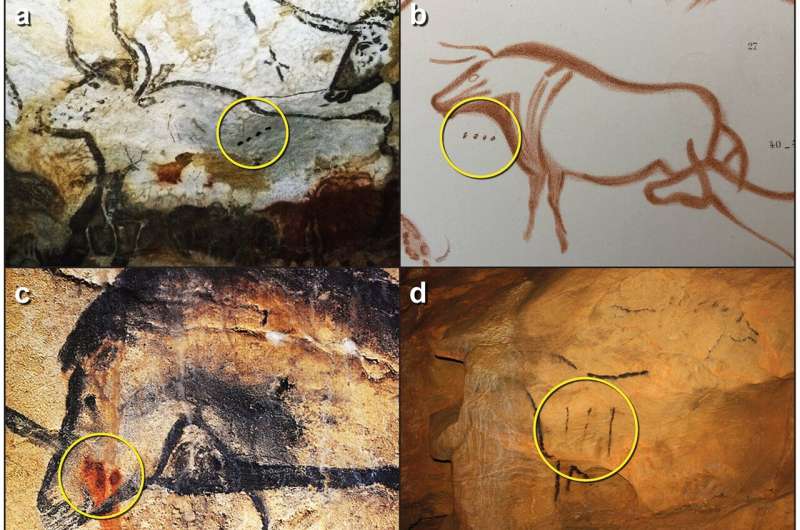January 5, 2023 report
This article has been reviewed according to Science X's editorial process and policies. Editors have highlighted the following attributes while ensuring the content's credibility:
fact-checked
trusted source
proofread
Cave markings show that Ice Age hunter-gatherers were the first to use a lunar calendar

A small team of researchers some independent, some affiliated with University College and the University of Durham, all in the U.K., has deciphered cave markings made by Ice-Age hunters tens of thousands of years ago. In their paper published in the Cambridge Archaeological Journal, the group suggests the markings are evidence of the first use of a lunar calendar.
Scientists and lay people alike have long known of the cave paintings made by people in the distant past all across Europe and the U.K. Prior research has shown that they were made by Ice-Age hunter-gatherers that lived mostly on the meat from animals of their time. Those animals were often depicted on the walls of the caves in which the people of the time were living.
But one aspect of the cave drawings has remained a mystery—certain dots and dashes placed near the animals. In this new effort, the researchers claim to have at long last deciphered the marks.
After several years of study, the researchers found that the marks coincided with what would have been seasonal behaviors of the animals, such as mating, or birthing. Such information, the researchers note, would have been very important to early hunters because it helped to keep track of which animals would be most easily killed during a given time period.
The researchers also found that the seasonal information drawn on the walls could be broken down into 13 periods, which coincided with the lunar calendar year. And this, they further suggest, is evidence of the first use of a lunar calendar. They also found that certain marks, such as Y-shaped symbols, held specific information, such as the beginning of birthing season for a given animal, while other marks noted seasonal information, such as snow.
The researchers also suggest that such a system of recording could be construed as a means of writing, or perhaps proto-writing system, which they further note, would be evidence of the earliest form of writing by Homo sapiens. They conclude by noting that more work still needs to be done in studying the wall art—there are still marks that have not yet been deciphered.
More information: Bennett Bacon et al, An Upper Palaeolithic Proto-writing System and Phenological Calendar, Cambridge Archaeological Journal (2023). DOI: 10.1017/S0959774322000415
© 2023 Science X Network





















